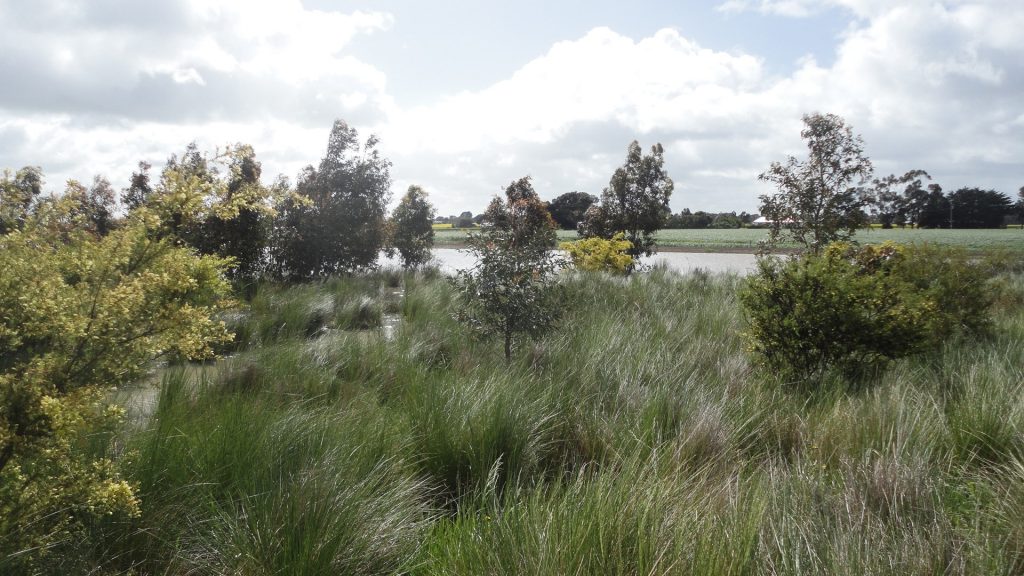Thomas Schwarten, one of Syrinx’s Associate Directors, gave a presentation a couple of weeks ago as part of the Australian Regional Development Conference in Coffs Harbour. The presentation focused on the Lake Bolac Sewage Treatment Wetland and the multiple ways the project can be considered a success story for passive and sustainable waste water treatment and reuse.
Between 2010-2011, Syrinx designed and implemented a passive sewage treatment wetland in Lake Bolac for Grampians Wimmera Mallee Water (GMW Water). Since then, Syrinx has been involved in its commissioning and ongoing monitoring and maintenance, during which time we’ve had the opportunity to gain a clear understanding of site specific maintenance requirements. We’ve also been able to increase the skill sets of contracted maintenance staff, to help ensure ongoing and appropriate site maintenance.
Located in Lake Bolac – a remote rural community 230 km N/W of Melbourne – the sewage treatment wetland treats the municipal wastewater of around 230 residents and visitors. Passive wastewater treatment is achieved by waste entering the system via a pressurised sewer main and flowing into the first stage of the primary treatment system which consists of settling tanks (for the removal of coarse solids), woodchip filters (for the removal of fine particulates, oil and grease) and dosing tanks for discharge into vertical subsurface flow wetlands.
The vertical subsurface flow wetlands facilitate reduction of Biological Oxygen Demand (BOD), Total Suspended Solids (TSS) and initial nutrient loadings. Wastewater then passes through a series of surface water wetlands for removal of nutrients and pathogens and finally, whilst a large proportion of water is lost through evaporative processes, any excess treated wastewater is released onto a biodiversity floodplain for disposal.
The wastewater is treated to Class C and is fully compliant with all EPA performance parameters. Class C treated wastewater is suitable for reuse and excess water is used to feed a biodiversity floodplain providing habitat for fauna and flora. Other stakeholders – such as community groups – endorsed the project during community consultation, and have been in full support since.
In terms of broader relevance, the biological treatment approach of using passive waste water treatment technology is perfectly suited for small remote communities. The approach delivers sustainable and environmentally acceptable solutions and provides long term opportunities for rural employment and capacity building within local communities and the workforce. The innovative use of treated wastewater to re-establish a biodiversity floodplain on degraded or unused (farm)land creates valued habitat for flora and fauna and value adds to community assets and infrastructure use.
Passive sewage treatment wetlands are highly successful if designed, constructed and maintained well; these systems have been successfully operated across Europe for decades and are implemented across Australia in many different climate zones and rural settings. The key to success once in operation is system and wetland knowledge and staff commitment.
More information about the project – including photos and diagrams – can be found here.
